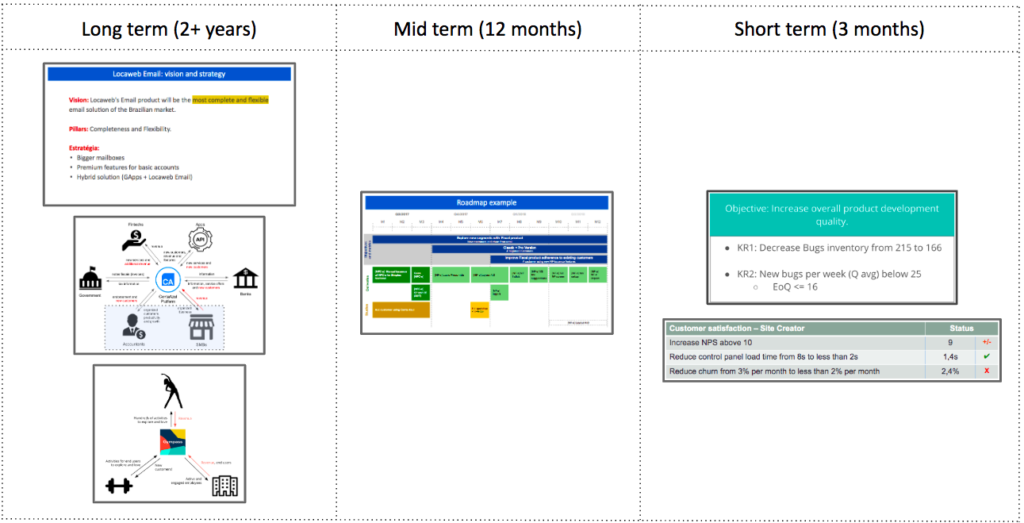Delivery date is another source of conflict between business and tech
13 de June, 2022Product management in a crisis
27 de June, 2022In the previous chapter about the growth phase of the product lifecycle, I described a set of 4 tools that will be of great support for your digital product management work when used together:
- Vision: is the reason why the product exists. It’s what guides all decisions regarding the product. It gives the context for the product development team to make decisions about what to prioritize.
- Strategy: is the detailing of the steps you will take to get your product closer to the vision. Both product vision and strategy are long-term tools, i.e., help you set, communicate and align the direction of your product for the next 2 or more years.
- Roadmap: enables you and your team to plan and communicate the view of the future that you have for your product for the next 12 months. It is important to have 12-month roadmaps in order to give additional details of what’s coming. You’ll probably be able to provide more details of the next 3 to 6 months, but that’s okay. The purpose of the 12-month planning is to give a chance to check if things left to be done later should be brought to be done earlier and to give some sense about when to discuss what is not being discussed for the next quarter.
- OKR: objectives and key results, or motivation and metrics, i.e., what do we want to accomplish and how we will know that we accomplished it? OKRs are composed of two parts, a goal (objective) and 2 to 5 key outcomes (key results) indicating that the goal was achieved. OKRs are normally short-term, during a quarter. It is possible to have 12 or 6-month OKRs, but since you already have the 12-month roadmap as a mid-term tool, it’s better to use OKR with a quarterly frequency. For some time I advocated replacing roadmaps, but now it’s clear that these two tools together yield better results. OKRs provide short-term planning and alignment. Roadmaps provide mid-term planning and alignment.
Putting it all together in one image, here are the product management 4 tools:

Final thoughts
With this chapter, we concluded the growth phase of the software product lifecycle. We understand how to handle customer feedback, what it is, and how to prioritize a roadmap. We also looked at the most varied types of metrics, including conversion funnel, engagement, churn, global and individual financial metrics, revenue and negative churn, NPS, loyalty metrics, and some considerations about metrics. We saw what it is and how to build the product vision and strategy, useful tools for making decisions about what will be the future of your product and how to get there. And in this chapter, we saw how these 4 tools (vision, strategy, roadmap, and OKR) work together to help us manage our product with long, mid, and short-term views.
Product leadership advisor
I’ve been helping several product leaders (CPOs, heads of product, CTOs, CEOs, tech founders, and heads of digital transformation) extract more value and results from their digital products. Check here how I can help you and your company.
Digital Product Management Books
Do you work with digital products? Do you want to know more about how to manage a digital product to increase its chances of success, solve its user’s problems and achieve the company objectives? Check out my Digital Product Management bundle with my 3 books where I share what I learned during my 30+ years of experience in creating and managing digital products:
- Startup Guide: How startups and established companies can create profitable digital products
- Product Management: How to increase the chances of success of your digital product
- Leading Product Development: The art and science of managing product teams
You can also acquire the books individually, by clicking on their titles above.

